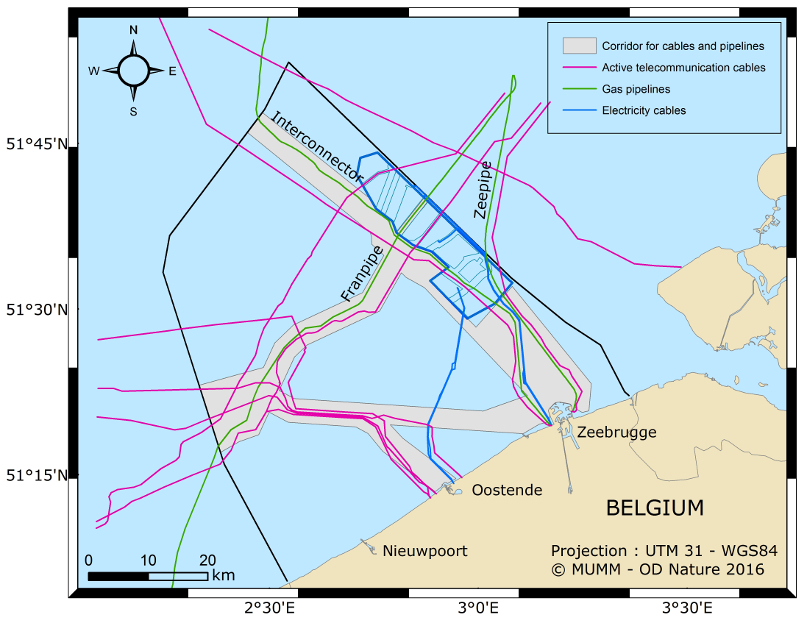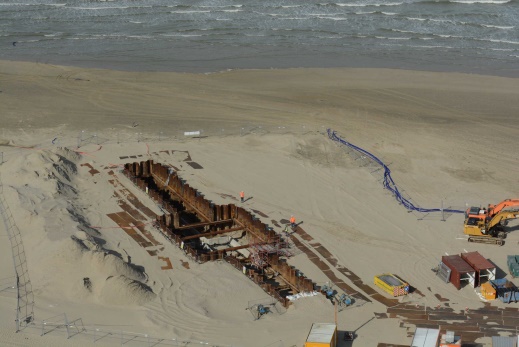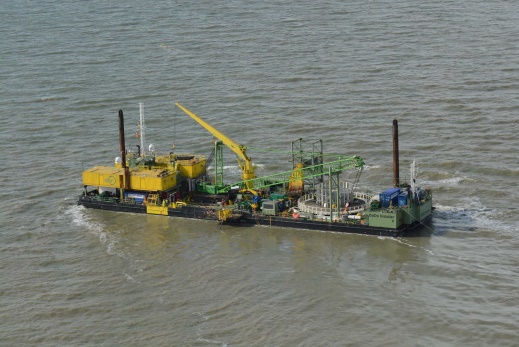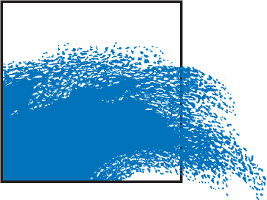Cables and Pipelines
The Belgian part of the North Sea is crisscrossed with gas pipelines, telecommunication cables and power cables. There are no oil pipelines in the Belgian part of the North Sea.

The gas pipelines have a diameter of roughly 1 meter. Offshore they are laid on the seabed and indicated on sea charts; closer to shore they are buried in the seabed, at a depth of 70 cm to 2 m, and are covered with a protective layer of gravel. The gas pipelines (in total 163 km long) are :
- the Zeepipe pipeline, which connects the Distrigaz terminal in the Port of Zeebruges to a pipeline in Norway;
- the Interconnector pipeline, which connects Zeebrugge to Bacton (England)
- the NorFra-pipeline (currently called Franpipe) between Norway and the Dunkirk (France).
The total length of telecommunication cables in Belgian waters is over 900 km. The cables lie buried in the seabed at varying depths. They consist of two types of cable: coaxial cables, laid between 1950 and 1988, and fibre optic cables, laid since their introduction in the 1980s. Not all of the cables are still in use.
The total length of power cables is over 200 km, a number which is steadily increasing with more wind farms being connected to the grid. In 2017-2018 the NEMO cable was constructed: a high-voltage DC cable connecting Richborough in the United Kingdom with Zeebruges in Belgium.




Images © RBINS/MUMM



